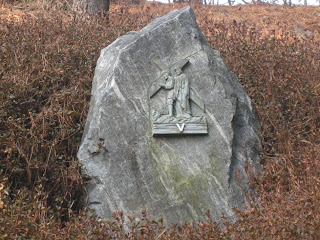Nu stiu daca as fi aflat vreodata povestea acestei stanci daca una dintre prietenele mele de pe facebook, o coreeana catolica devotata nu punea o poza care ar fi parut anodina cuiva care s-ar fi limitat doar la imagine. Dar cum eu sunt curioasa m-am apucat sa dau la tradus domnului Google nu numai explicatia de la poza, ci si comentariile. Apoi am copiat textul in coreeana si am apelat iar la domnul sus amintit, de data asta la cautat. Si am gasit niste bloguri care m-au lasat sa copiez textul (cele mai multe bloguri coreene pe care mi le ofera Google sunt pe Daum sau Naver, si astia nu te lasa sa copiezi nici macar un caracter)si astfel sa ma cutremur citind despre ce e vorba. Dar pt ca nu eram sigura ca am inteles bine galimatia oferita de masina, am dat apoi search in engleza si asa am reusit sa pricep mai bine despre ce e vorba.
Anume intre 1784-1879 in Coreea s-a dezlantuit o cruda prigoana impotriva crstinilor catolici. Nu numai ca au fost arestati dar au fost executati public la Stork Rock. Mai mult, ca sa fie un exemplu pt toti cei care ar fi dorit sa renunte la invataturile confucianiste si sa imbratiseze credinta catolica cei condamnati erau decapitati iar capetele lor erau atarnate in copaci. Se spune ca paraiasul care curgea la poalele stanci se inrosea uneori de sangele martirilor care nu voiau sa renunte la credinta in Christos.
Acum in acel loc este un altar pe care sunt inscriptionate numele martirilor, atatea cate se cunosc, pt ca unele au ramas anonime, s-a construit de catre voluntari catolici un turn impozant (cu mainile goale, ca sa simta toata durerea celor care au pierit aici) si pe stanci sunt gravate patimile Mantuitorului, exista si statui ale Fecioarei si...daca am inteles eu bine...ale unei printese martire. Mai jos am copiat textul pe care l-am gasit in engleza.
Stork Rock, a sacred ground of Catholicism, lies on a small hill along the Jemin Stream, which runs to River Geumgang in Gongju, Chungnam, between Muryeong Royal Tomb in the west and Gong Mountain Fortress in the east.
It was 1784 when Catholicism was first introduced into Chungnam. Once the Chosun Dynasty is persecution started, the Gongju Gamyeong (like city hall) was crowded with Catholic believers arrested in three provinces (Gyeongsang, Jeolla, and Chungcheong). There was a huge number of martyrs over 100 years up to 1879 when there was the official record of the last martyrs. Most of them were publicly executed here at the Stork Rock.
“After beheading the Catholic believers in public at this Stork Rock, they hung their heads in the trees for long to warn people against the faith. The Jemin Stream before the rock used to run wider than the current levees. When flooded due to heavy rainfall, the stream would turn red with the martyrs' blood and run to River Geumgang.” (from the pamphlet of Stork Rock)
Approaching the sacred ground, you can first notice the martyrdom tower looking over River Geumgang. Unlike other sacred grounds where a series of boring granite steps goes on and on, the Stork Rock offers a natural trail past the parking lot and a simple, neat entrance.
The lot with an area of 2,000 or so pyeong is divided north and south and further east and west. They put up a shrine at the west end to the entrance and the martyrdom tower at the south end. At the time of construction, many Catholic believers voluntarily worked on the site and used their bare hands to build the tower in order to feel the pain of the martyrs. Placing your hand on the tower, you can almost feel their desperate pain leaping through time and say to yourself, ‘This is the sacred ground of Stork Rock.
http://


























Un comentariu:
Multumesc Viorica. Chiar daca dureroase, sunt fapte ce trebuiesc stiute. Astfel de atrocitati fata de crestini nu stiam ca au avut loc si acolo. Informatiile tale sunt importante. Multumesc pentru staruinta. Sa spunem si noi o rugaciune pentru martirii acelui loc.
Trimiteți un comentariu